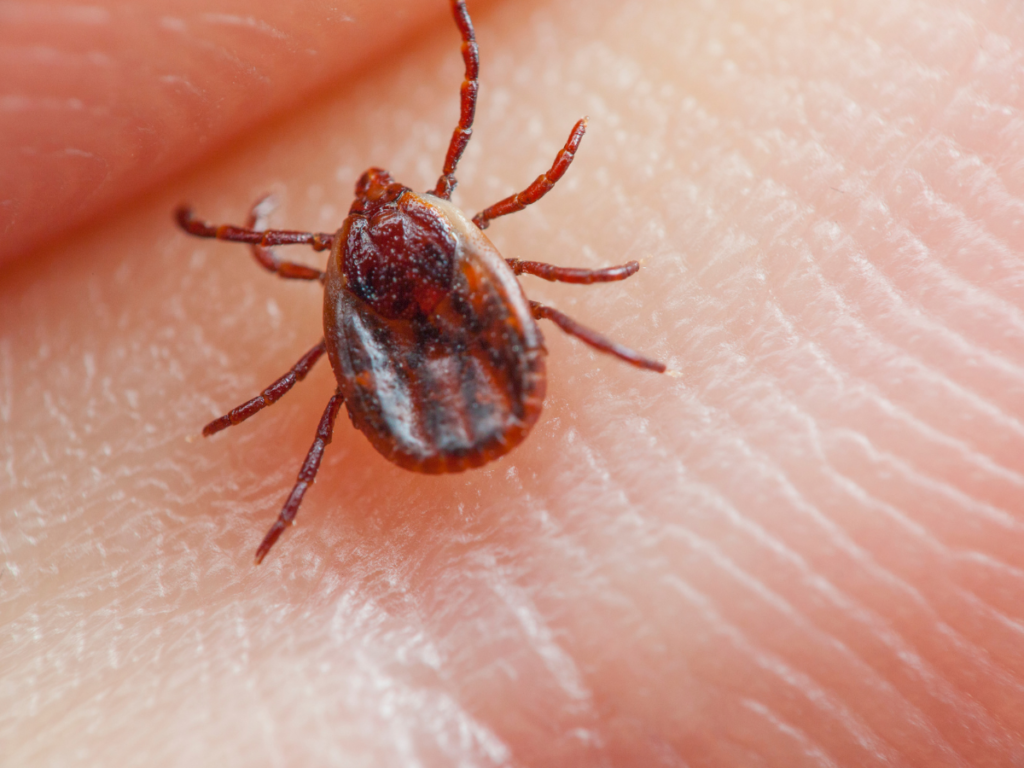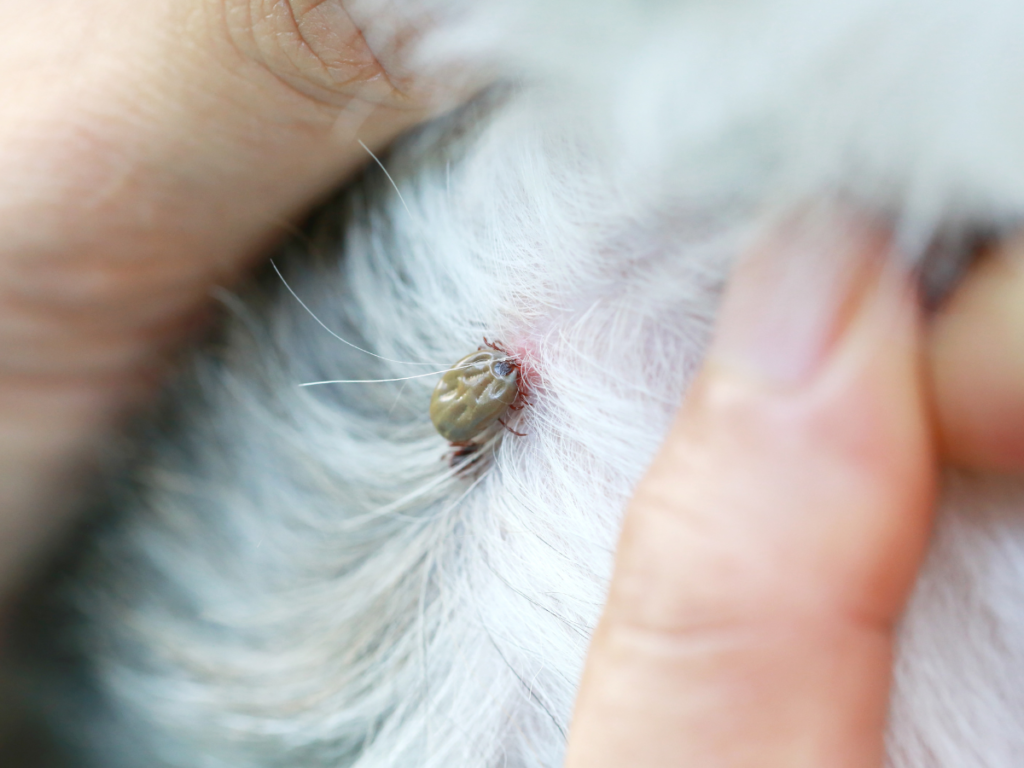Ticks are a common parasite that can infest cats, on their skin, but over the years, as a cat owner, I have learned to deal with them and one of my tick removal tricks might surprise you.
Ticks are a pest leading to various health issues if not promptly removed. If you live in an area where ticks are found, then you need to be aware of what they look like and check your pets that go outside, regularly to make sure that if there are any ticks on their bodies can be removed swiftly.

I have a secret weapon, though, and it’s Hibiscrub, which is a widely used antiseptic solution, and it can be used as an effective tool for tick removal while minimizing the risk of infection. I worked in surgial theatres as a nurse, for a period of time and Hibiscrub was a common antiseptic we used often, but it’s also super useful for tick removal too.
Understanding Ticks and Their Dangers
Ticks are small arachnids that attach themselves to animals, including cats, to feed on their blood. If left untreated, tick infestations can lead to various complications, such as skin infections, anemia, and even the transmission of diseases. Prompt and proper tick removal is crucial to prevent these potential health risks.

Why I use Hibiscrub:
- Antiseptic Properties: Hibiscrub’s antiseptic properties help minimize the risk of infection that may arise from an open wound left behind after removing the tick.
- Gentle on Skin: Hibiscrub is formulated to be gentle on the skin while effectively disinfecting the area, making it suitable for use on cats.
- Reduced Irritation: The mild nature of Hibiscrub helps reduce skin irritation, an important consideration when treating sensitive areas on a cat’s body.

So how do I use it?
Here’s my step-by-step guide:
- Gather Your Necessary Supplies:
- Hibiscrub solution
- Tweezers or tick removal tool
- Disposable gloves
- Cotton balls or gauze
- Sealable plastic bag
- Prepare the Area: Choose a well-lit area with minimal distractions. Put on disposable gloves to prevent direct contact with the tick and potential pathogens.
- Apply Hibiscrub: Soak a cotton ball or gauze with Hibiscrub solution. Gently dab the solution around the tick, ensuring that the tick is well-saturated. This helps immobilize the tick and disinfect the area.
- Use Tweezers or Tick Removal Tool: Using fine-tipped tweezers or a dedicated tick removal tool, grasp the tick as close to your cat’s skin as possible. Avoid squeezing the tick’s body, as this can force harmful fluids into your cat’s bloodstream.
- Remove the Tick: With steady and gentle pressure, pull the tick upward without twisting or jerking. A slow, even motion should help ensure the tick is removed intact. Dispose of the tick in a sealable plastic bag.
- Disinfect the Area: After removing the tick, clean the area with another cotton ball or gauze soaked in Hibiscrub. This further disinfects the site and reduces the risk of infection.
- Monitor the Area: Keep an eye on the area where the tick was removed. If you notice any signs of infection, inflammation, or unusual behavior in your cat, consult a veterinarian.
- Dispose of Materials Safely: Seal the plastic bag containing the removed tick and dispose of it properly. Remove your gloves carefully and wash your hands thoroughly.
- Post-Removal Care: To soothe the area and promote healing, you can apply a small amount of a cat-safe antiseptic ointment after disinfecting with Hibiscrub. This can also help prevent itching and irritation.
Of course, this is also dependent on your cat co-operating with you and letting you remove the tick. You may need to swaddle them, in a towel or stretchy blanket, so they are safe but rendered immobile, or you may need another pair of hands to help hold your cat and keep them calm and still. Like with claw cutting, sometimes it’s better to make it a two man job.
I have tried lots of ways for safe tick removal and this is by far the most effective way, and the Hibiscrub helps to reduce the risk of infection which is vital.
If you have never removed a tick before, there are helpful YouTube videos you can watch, to show you how, or you can of course chat to your vet, and ask them to show you, although they will probably charge you a fee for this. However you do need to remove the entire tick, because if you leave any part of it’s nasty little head in your cat’s body, you risk infection issues. So it’s best to feel completely confident before you attempt your tick removal procedure.
Of course, making sure your cat has regular prescribed tick treatment helps, and we do that too, but unfortunately, if you live where ticks are found, you may face them on your pet, at some point, so being able to remove them safely may seem like a random life skill, but it’s definately worth adding it to your pet owner CV.
such a cute looking cat, bless her, hope she manages to avoid further ticks this summer #animaltales